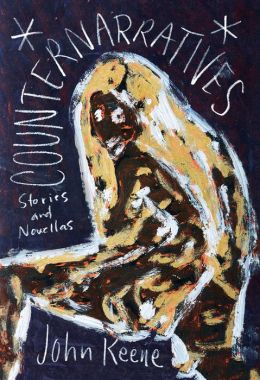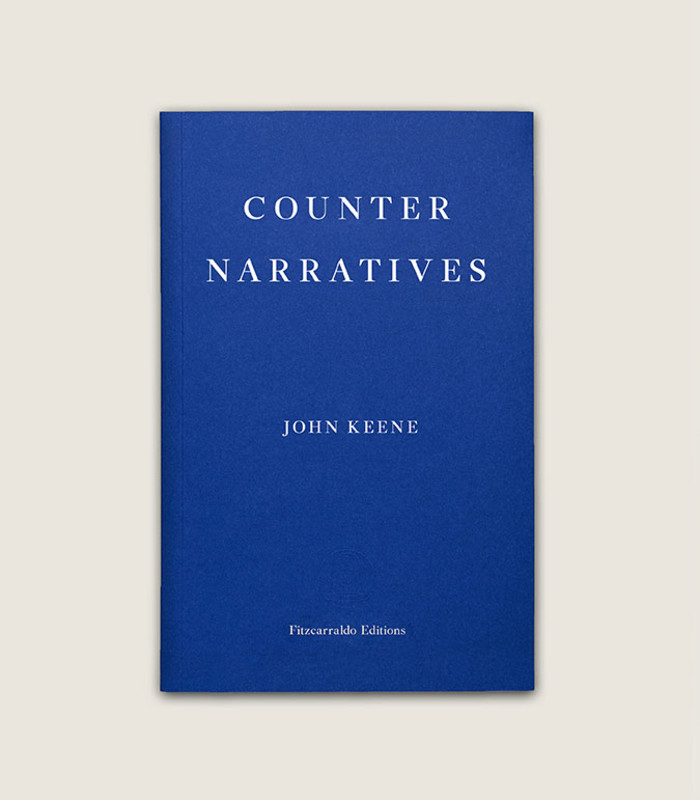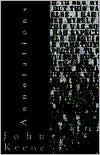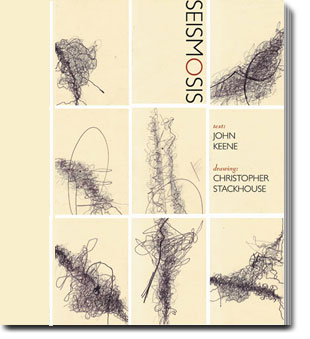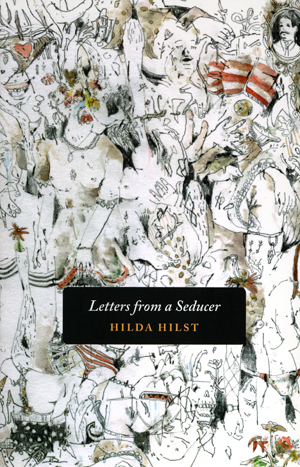I am not a dance critic nor a dance scholar, let me make that clear. I point this lest I incur the sort of situation that allegedly occurred a few years ago when some kind person cited this blog in a dissertation on dance. It startled my (very generous) colleague who's a leader in that field and happened to be participating in the dissertation defense. So please, dear reader, read these remarks as those of a fan and nothing more. I do love dance, I love to dance and I love going to see dance performances. I don't do this enough, I'll admit it. Fortunately, last week, I got my tail into gear and headed down to
Chicago's
Museum of Contemporary Art to see
red black and Green: a blues, the collaboration between
Marc Bamuthi Joseph/The Living World Project and local artist and urban planner
Theaster Gates. This was only one of several events that Joseph/The Living World Project held at MoCA, from April 12-14. Others included
a conversation with former Obama administration official and environmental and jobs activist Van Jones; and
SHareOUT, which turned the stage over to a number of young Chicago poets and activists, including
Young Chicago Authors, Kuumba Lynx, YOUmedia, FilmLAB@1512 and AgLAB@1512 of the
Better Boys Foundation, and
The MCA Creative Agency.
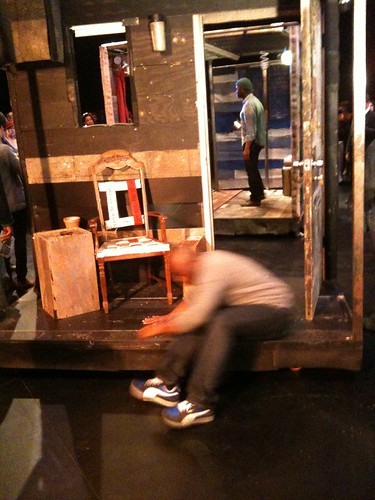 |
| Marc Bamuthi Joseph (foreground) dancing, Theaster Gates through door |
For
red black and Green: a blues, Joseph conducted field research, including interviews and community-based events, for several years, in the four cities--
Chicago, New York (Harlem), Houston, and
Oakland--that formed the compass points for the performance, which he and collaborators Gates, Chicago native
Traci Tolmaire and
Tommy Shepherd a.k.a. Emcee Soulati also structured according to the four seasons, four cycles of life, and four rooms of a shotgun-style house (porch, kitchen, bedroom, front/living room). With Gates, he realized the house metaphor through an interactive and versatile stage installation, a mobile house/set seemingly built out of scraps (an organic,
green set), titled
The Colored Museum, playing off the title of
George C. Wolfe's famous play, that the public could view during museum hours, and which provided the setting and backdrops for each part of the performance. One of the exciting aspects of
red black and Green: a blues, was being able to join Joseph, Gates, Tolmaire, and Shepherd down on the stage at the beginning of the performance. Everyone attending, as well as the ushers, were invited to mill about, observe them, find a spot, engage. They not only interacted with the audience, singing and speaking directly to us, handing out watermelon slices, gently ushering us about as the installation-house-set underwent its initial reformulations, but our presence, I think, probably shaped how this first part of the event unfolded, provoking some improvisation. The space itself, then, became embodied, not just by the performers, but by the audience.
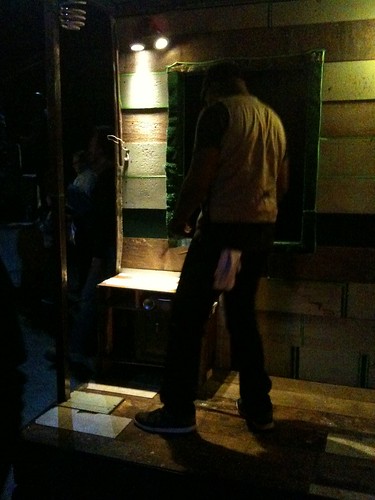 |
| Tommy Shepherd, making music |
Let me say that Joseph can dance his behind off, as can Tolmaire; Gates can sing; and Shepherd can create any beat you might envision. But they all sang, and danced, and made music. They sang and danced and made music out of seemingly nothing, out of anything, out of everything. They all also embodied the various people--characters--Joseph had interviewed, harmoniously fitting together the documentary material, Joseph's stirring spoken word poetry (I mean, this man can write and perform some poetry!), the dancing in multiple styles, from ballet to hip hop, the singing (which included Gates's and the others' performances of standards, blues songs, and original pieces), to create an embodied whole that suggested a larger vision.
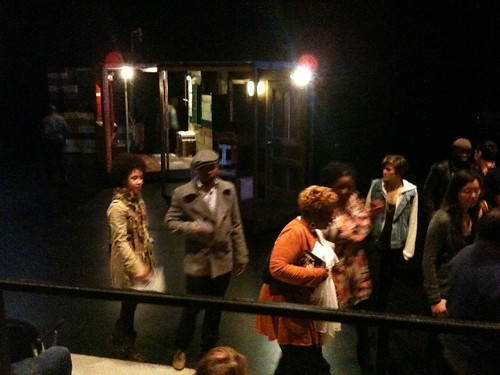 |
| The audience heading back to seats after the first part of the show |
With each shift to a new season and city, a new cycle of life, came a new configuration of
The Colored Museum, and at every point, even during the transitions, Joseph or his collaborators kept things going and flowing, though they also were not afraid to show the seams. Other elements of the multimedia performance included still and video projections on the back walls, judicious use of materials like seeds and bowls and water, lights and darkness, and taped music. At one point, after the Harlem scenes, I was convinced that everyone had danced and sung themselves out, and if Joseph just decided to lie on the stage and Gates went silent but for a blues hum, I wouldn't have faulted them. But they kept moving towards the finale, and by the end, their aims had become clear. A reporter sitting next to me remarked at the end of the event that she would be reflecting on this performance for some time to come, and I had to agree.
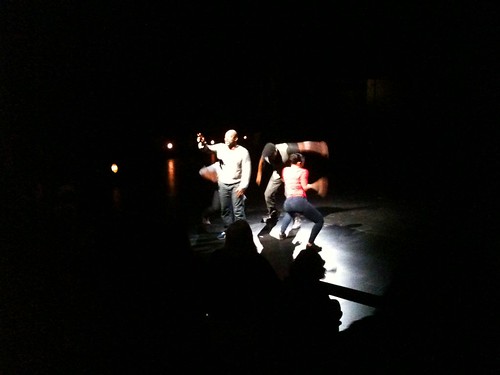 |
| red, black and Green: a blues |
The red black and green subtext of the performance, i.e.,
blackness, as well as the
blues, I think, were clear from the beginning, but I was curious to see how they would tackle the Green. The complexity of black--and brown, and working-class--people's relationship to the environment, natural, built, always constructed in social, economic and political terms, was complex.
red black and Green: a blues made clear that any blanket pronouncements about a green approach that did not take into account historical and material conditions, the diverse and sometimes divergent perspectives of people who were often living in a state of multiple displacements, the rich connections between and across cultural circuits, was bound to fail. Joseph himself is Haitian-American, the son of an immigrant; in one scene, he portrayed himself talking to his son about the Black Panthers, and his and the landscape's relationship to them. His working through of their legacy for him and for his son, and for those who'd come after and might not know how they effected change and yet were not able to accomplish some of their goals, but left traces on those who came after, left traces in the landscape itself, marked it, was quite moving. His son, he suggested, was able to pick up the threads.
 |
| A scene from red, black and Green: a blues |
The deft weaving of global and regional traditions, alongside critical and intellectual engagement, in embodied practice, was the highlight of this performance. Yet it never felt like a critique turned into art, or intellectualism for its own sake. The embodying of concepts, words, movements, gestures, voices, practices, of the space itself, occurred in a thrilling, unforgettable way. If
red black Green: a blues comes through your city, don't miss it. I am looking forward to whatever these amazing artists come up with next.
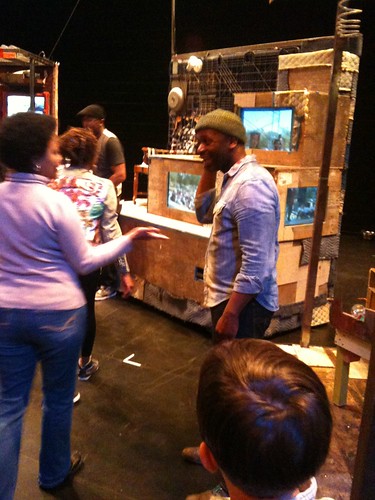 |
| Theaster Gates, after the show |
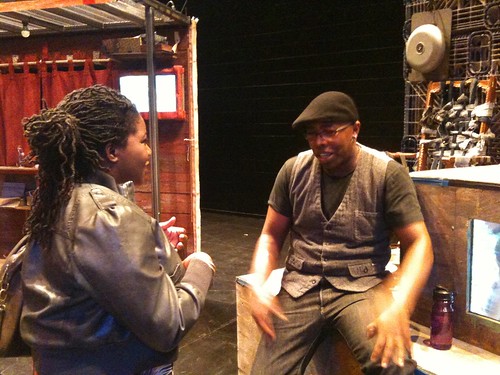 |
| Tommy Shepherd, after the show |
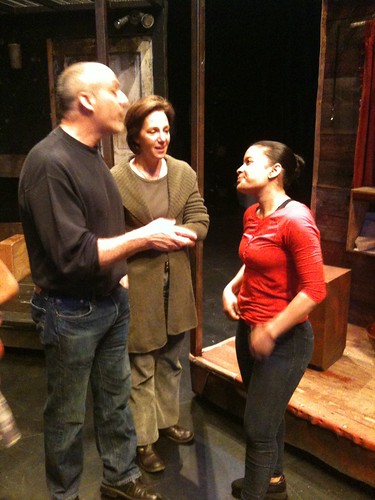 |
| Traci Tolmaire (on right), chatting with fans |
 |
| Marc Bamuthi Joseph, at show's end |
































